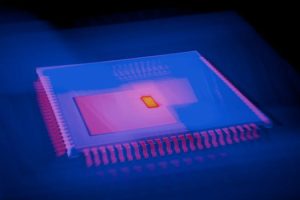Mind-Reading Keyboards: The Future of Text Input
Mind-reading keyboards may sound like something out of a science fiction movie, but they could soon become a reality. With advances in technology and artificial intelligence, researchers and tech companies are working towards developing keyboards that can read our thoughts and translate them into written text. This could revolutionize the way we communicate and interact with technology, making text input faster, more accurate, and even more seamless. In this article, we will delve into the concept of mind-reading keyboards, how they work, and their potential impacts on our daily lives.
The Evolution of Text Input
The way we input text on devices has come a long way since the invention of typewriters. From the cumbersome rotary dial phones to the rise of smartphones with touchscreens and virtual keyboards, text input has constantly evolved with technology. However, the problem with traditional keyboards, whether physical or virtual, is that they require manual dexterity and can be quite limiting. This is where mind-reading keyboards come into play.
What are Mind-Reading Keyboards?
Mind-reading keyboards, also known as brain-computer interfaces (BCIs), are devices designed to directly interpret brain signals and convert them into text. This means that users will no longer need to type or touch any keys; instead, their thoughts will be translated into written text. This technology relies on the use of electroencephalography (EEG) sensors, which can detect and record brain activity.
How do They Work?
Mind-reading keyboards use EEG sensors to collect electrical signals from the brain. These sensors are placed on the scalp and detect the electrical changes that occur in the brain when we think about moving our fingers to type. These subtle changes are then analyzed by specialized software, which translates them into commands that are then converted into text on the screen. The process is quick and seamless, and it mimics the way our brain sends messages to our hands to type.
Potential Applications
The potential applications for mind-reading keyboards are vast, and they could greatly benefit people with disabilities or conditions that affect their motor skills, such as paralysis or cerebral palsy. They could also enhance the typing experience for individuals who need to use their hands for other tasks, such as surgeons or chefs. In addition, mind-reading keyboards could be used for hands-free typing, making it easier for individuals to multitask while completing written tasks.
The Future of Text Input
The development of mind-reading keyboards could significantly change the way we interact with technology, making text input a more intuitive and effortless experience. This technology could potentially eliminate the need for physical keyboards, freeing up space and allowing for more compact and portable devices. With the increasing demand for wearable technology, mind-reading keyboards could also be incorporated into smartwatches or headsets, making it even less intrusive and more convenient for users.
Potential Limitations
Although mind-reading keyboards hold immense potential, there are some limitations and challenges that need to be addressed. One of the main challenges is the technology’s accuracy, as it relies heavily on the user’s concentration and the quality of the EEG sensors. Moreover, the software needs to be trained to recognize each individual’s unique brain signals, which can take time and may not be accurate for everyone. Security and privacy concerns may also arise, as this technology involves the direct access of the brain and its thoughts.
Conclusion
In conclusion, mind-reading keyboards have the potential to revolutionize the way we input text on our devices. With their seamless and hands-free operation, they could make typing effortless and faster, enhancing our productivity and multitasking capabilities. However, further research and development are needed to overcome the current limitations and ensure the accuracy and reliability of this technology. Nonetheless, it is an exciting prospect that could significantly impact our lives in the future.










